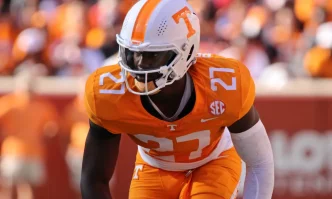Mike Gundy is finally embracing the realities of NIL (Name, Image, and Likeness) and revenue-sharing, a significant turnaround for the longtime head coach of Oklahoma State football. For years, Gundy, like many of his colleagues, hoped that these seismic shifts in college football would prove to be fleeting trends. However, the landscape has rapidly evolved, making adaptation not just advisable but necessary for survival in this new era of the sport.
The momentum of these changes has shifted from mere speculation to an immediate imperative. Coaches and programs are now tasked with aggressively managing player transfers and finding innovative ways to remain competitive. The recent landmark settlement in the House v. NCAA case highlights this transformation, indicating that college football has firmly transitioned into a business model where coaches like Gundy can no longer remain passive observers.
Reflecting on this shift, Gundy shared, “I almost just thought, ‘This will go away. Surely this can’t last.’ And then it just kept building momentum. And then after a point, about 18 months ago, I said, ‘This is not going away. We’re going to have to make some real adjustments here.’”
An indication of Oklahoma State’s commitment to adapting occurred with the addition of 41 incoming transfers as part of their 2025 class. This impressive influx ties for the third-largest among Power Four programs this cycle, outpacing the total number of incoming transfers the Cowboys have had during the previous six cycles since the NCAA transfer portal was introduced.
What catalyzed Gundy’s change in philosophy?
He candidly admitted, “So, the truth be known, this portal class from January is the first class that we ever bought. We’d not bought portal kids. That hurt us the last year or so from a depth standpoint.” This hard lesson was underscored by the Cowboys’ disappointing 3-9 record last season, marking their first bowl game miss in nearly 20 years—an uncharacteristic downturn for a program that has consistently found success under Gundy.
He continued, acknowledging the consequences of his previous reluctance to invest in transfer players: “And that was nobody’s fault… That was really kind of my fault because what I had done was taken money that had been raised through donations and spread it amongst the troops somewhat evenly to the current players. We didn’t go out and solicit players and pay them to come to our team. We did that starting in December, which, I think we all would agree, if you don’t do that, you’re not going to survive.”
While Oklahoma State has welcomed a significant number of transfers, their national ranking places them at No. 32 in the portal rankings for the 2025 class and fifth in the Big 12. As Gundy navigates this new territory, it’s clear that he and the Cowboys are determined not just to adjust but to thrive in the evolving landscape of college football.







